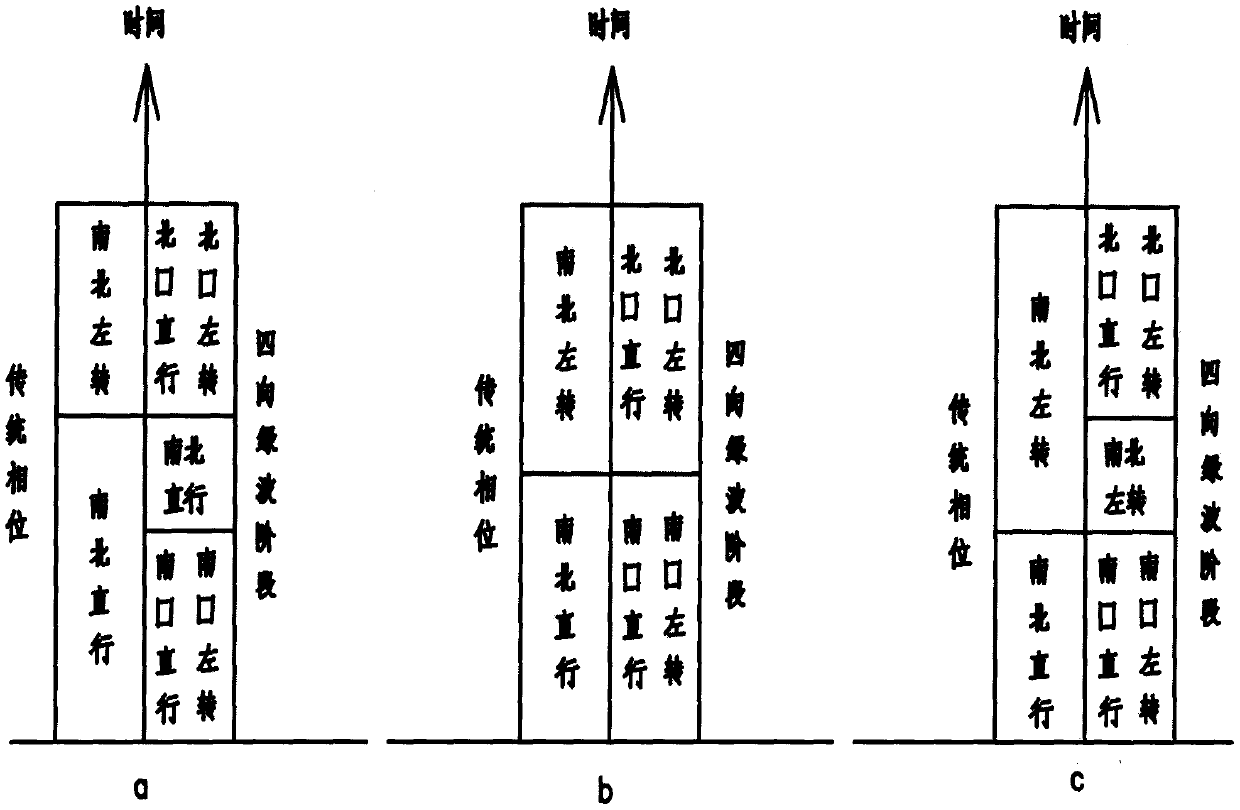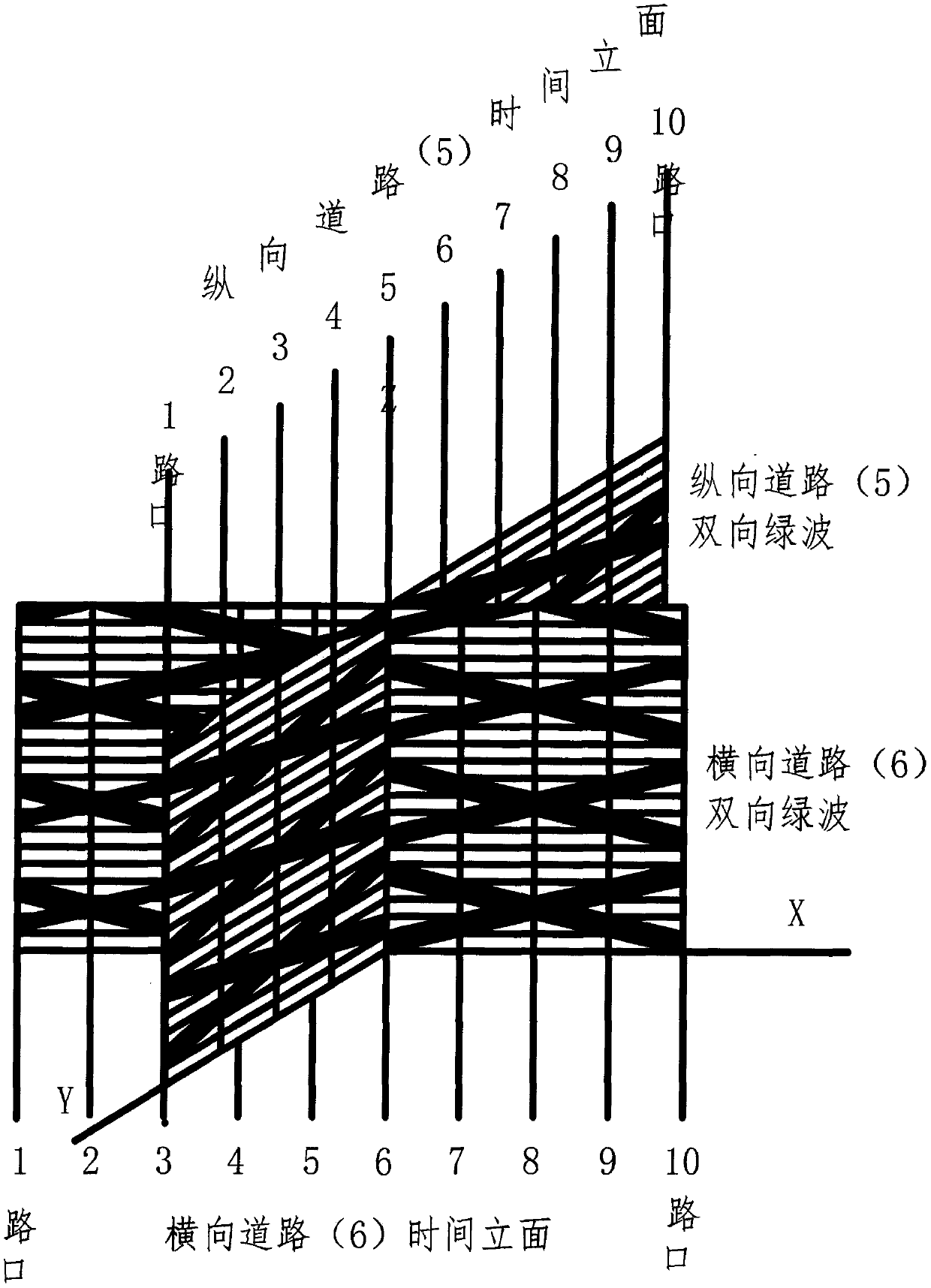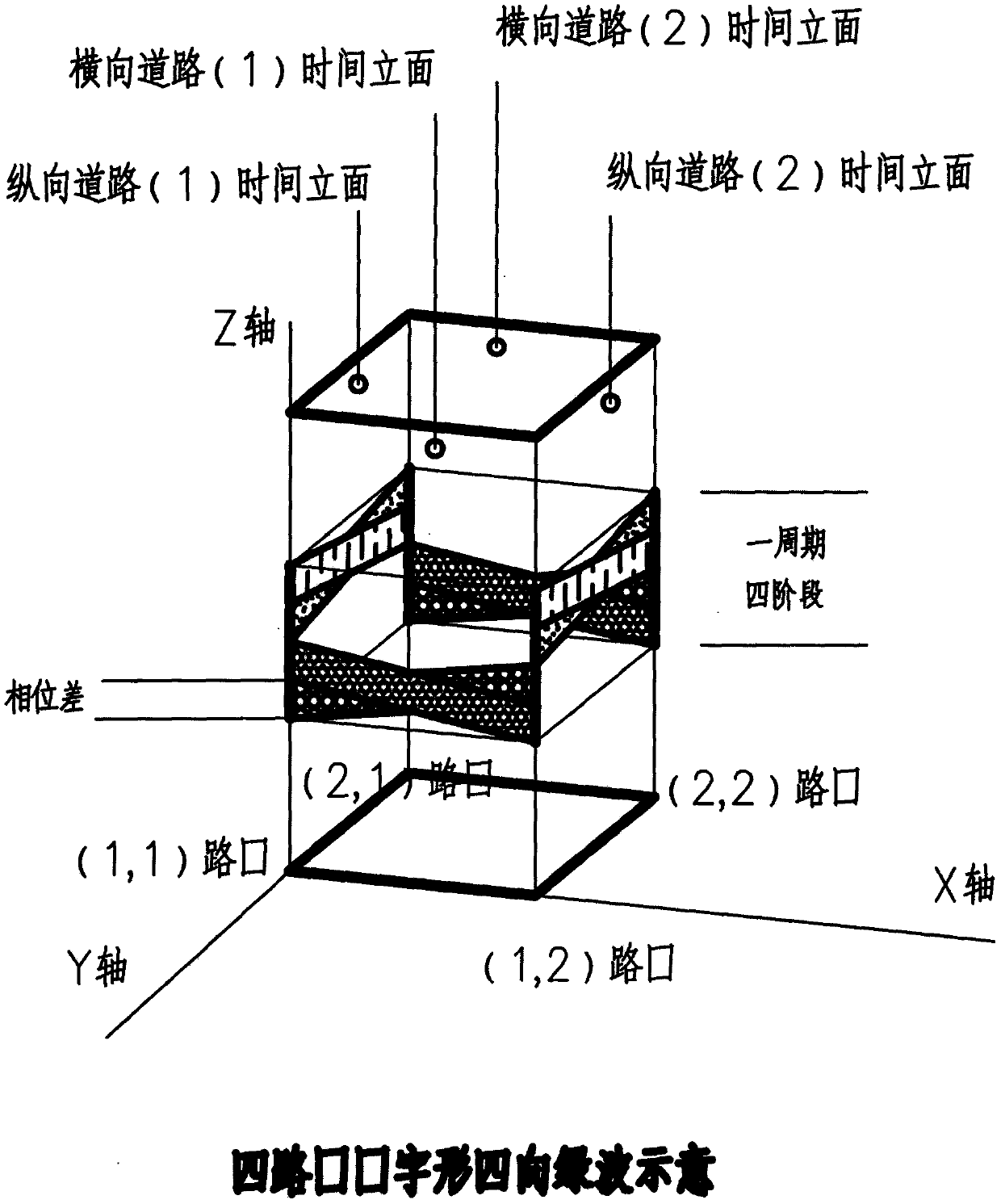Planar intersection four-way green wave and regional coordination control and implementation method with four-way green wave effect
A two-way green wave and crossing technology, applied in the traffic control system of road vehicles, traffic control system, traffic signal control, etc.
- Summary
- Abstract
- Description
- Claims
- Application Information
AI Technical Summary
Problems solved by technology
Method used
Image
Examples
Embodiment approach 1
[0084] Based on the three-dimensional software, with the plane map as the bottom surface, the east-west road as the horizontal road (X-axis direction), the north-south road as the longitudinal road (Y-axis direction), and the Z-axis representing time is erected at each intersection position. Consistent time scale and road scale.
[0085] The intersections of the vertical and horizontal roads are respectively connected into lines (curves become equal-length broken lines), and the connecting lines are raised in parallel along the Z axis to form the time facades of the vertical and horizontal roads.
[0086] On the top of the vertical and horizontal road time elevations, draw the center line and lane line according to the width ratio of the road, and input the topological structure of the road network, the geometric data of intersections and road sections, the number and length of various guiding lanes at each entrance, Various information including the number of lanes at each ex...
Embodiment approach 1
[0102] A summary of the implementation:
[0103] Build volume models, conduct application scene investigations, draw road network maps, and draw time-distance maps of real-time traffic conditions.
[0104] Perform period, phase, phase sequence, and phase difference calculations from point to surface and / or from line to surface.
[0105] Generate a new four-way green wave time-distance map.
[0106] Generate the green wave service area on the road network map according to the time-distance map.
[0107] Simulate and demonstrate the four-way green wave service area, report relevant data and offline solutions.
[0108] Run the four-way green wave online, and push the service area information of the four-way green wave to the driving vehicles.
[0109] A new cycle of the above work is carried out according to the emerging situation.
Embodiment approach 2
[0111] Follow the core method of realizing the four-way green wave, perform calculations similar to the first embodiment, draw the time-distance map by road, but do not display the three-dimensional model.
[0112] With the same time scale and road scale, draw the two-way green wave time-distance maps of the 4 vertical and 6 horizontal roads described in paragraph [0079], 10 in total.
[0113] Same as Embodiment 1, the factors that determine the period, phase, phase sequence, and phase difference include the flow, speed, headway, and distance between vehicles associated with time and space, the topological structure and geometric size of the road network, and the number of various guiding lanes. Quantity and length, quantity and timing of confluence arrival of upstream vehicles, various climate and weather conditions, etc.
[0114] Same as Embodiment 1, when drawing 10 vertical and horizontal two-way green wave time-distance maps, first unify the cycle, strictly abide by the g...
PUM
 Login to View More
Login to View More Abstract
Description
Claims
Application Information
 Login to View More
Login to View More - R&D
- Intellectual Property
- Life Sciences
- Materials
- Tech Scout
- Unparalleled Data Quality
- Higher Quality Content
- 60% Fewer Hallucinations
Browse by: Latest US Patents, China's latest patents, Technical Efficacy Thesaurus, Application Domain, Technology Topic, Popular Technical Reports.
© 2025 PatSnap. All rights reserved.Legal|Privacy policy|Modern Slavery Act Transparency Statement|Sitemap|About US| Contact US: help@patsnap.com



